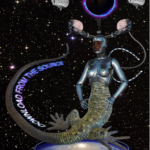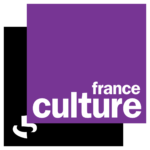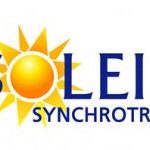Photo Exhibition: The Goldsmiths of Light by Vincent Moncorgé
In “The Goldsmiths of Light”, photographer Vincent Moncorgé invited you into the heart of the synchrotron SOLEIL facility, located at the University Paris-Saclay in France, where he spent day and night photographing the multidisciplinary research facility as part of the celebration of its first decade. The result is a stunning glimpse into this French kaleidoscope of technologic and human skills.
A synchrotron is like a giant lamp that lights up matter. Producing a small beam made up of electrons that rotate at almost 300 million meters per second, it emits what is called synchrotron radiation. Just like sunlight, the synchrotron beam offers the entire spectrum of white light, far infrared to very hard X-rays. It is used to analyze solids, gases, liquids, living matter and to reveal the most amazing, promising properties.
“The Goldsmiths of Light” exhibition gave students, faculty, and the general public the unique opportunity to discover this last generation research equipment through a virtual visit in photographies, and the various scientific fields which benefit from this tool. In conjunction with the exhibition, an interactive lecture series were scheduled, providing greater details into the SOLEIL synchrotron and showing how it can contribute to the development of news materials.
For more information about the artist, visit: http://vincentmoncorge.com.
This exhibition and lecture series were free and open to the public.
PHOTO EXHIBITION
When: October 16-31, 2014
Where: Georgia Institute of Technology, Clough Undergraduate Learning Commons (266 4th Street NW, Atlanta, GA 30313), 3rd floor gallery
LECTURE SERIES:
Documenting Sciences: a Photographer’s Perspective, by Vincent Moncorgé
When: October 23, 2014, from 6:00 p.m. to 7:30 p.m.
Where: Georgia Institute of Technology, Clough Undergraduate Learning Commons (266 4th Street NW, Atlanta, GA 30313), Auditorium 152 on the 1st floor
Freelance professional photographer Vincent Moncorge shared his experience on documenting science. Following a short historical exploration from the late 19th century and French photographer Etienne Jules Marey’s Chronophotograph, he detailled the new modern story-telling strategies the scientific community is facing today. Then, he spoke about his own personal experiences with photographing synchrotron daily life to model organisms such as tiny Drosophila flies.
New Materials Development at the SOLEIL Synchrotron: an International Collaboration by Edward Conrad and Amina Taleb
When: October 30, 2014, from 6:00 p.m. to 7:30 p.m.
Where: Georgia Institute of Technology, Clough Undergraduate Learning Commons (266 4th Street NW, Atlanta, GA 30313), Auditorium 152 on the 1st floor
The development of new materials for electronics or a host of other applications has become a difficult task. This is due in part because these new materials are small or thin and can be only a few nanometers across (5000 times smaller than the width of a human hair). At these small scales, macroscopic properties change in ways that depend on shape and size. Metals become insulators, opaque materials become transparent and new physics begins to take hold. This is the definition of the “nano-world”. In order to study these new nano-materials, instruments must not only be capable of seeing these objects, they must also be able to tell their chemical makeup and determine their electronic properties. Scientific instruments capable of studying nano-objects are powerful, complex to build and operate, and expensive. This means that the days of a single scientist working alone in his or her lab are long gone.
In this lecture, Ed Conrad, Georgia Tech Physics Professor, and Amina Taleb, Director of Research at the French National Center for Scientific Research (CNRS), gave a feel for how modern research is conducted in the era of small materials and big machines, showing an example of an international materials research collaboration between Georgia Tech’s School of Physics and researchers at the synchrotron SOLEIL near Paris. SOLEIL is one of the brightest light sources in the world and uses Einstein’s Nobel winning theory of the photoelectric effect to “see” how electrons move in a solid. The goal of the collaboration is to develop a new type of electronics based on graphene; a single atomic layer of graphite.
This France-Atlanta 2014 event and lecture series were presented in partnership with:












